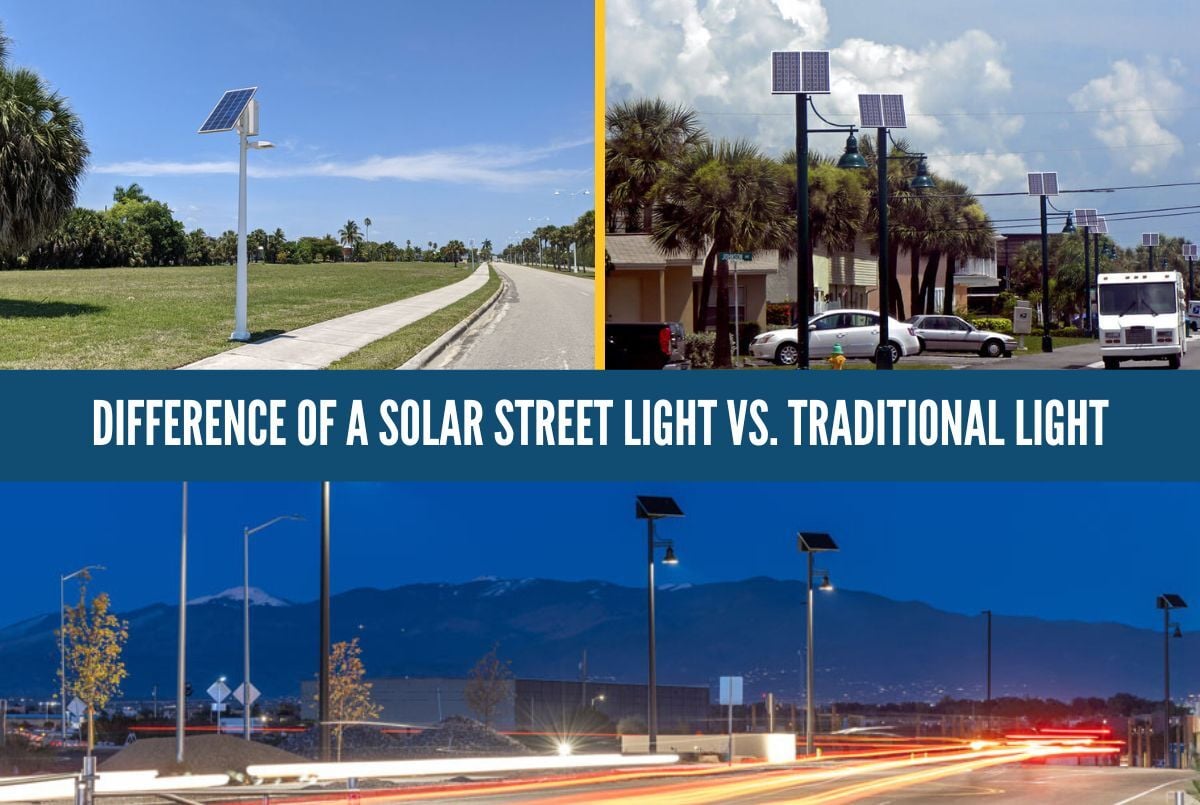


More cities and communities are making the switch to solar street lights over traditional grid-powered options, and the reasons behind this trend are both practical and forward-thinking. With concerns about energy efficiency, sustainability, and long-term cost savings on the rise, solar lighting is quickly emerging as a better alternative in many situations. But what exactly sets solar solutions apart from their conventional counterparts?
By examining the features and benefits of off-grid solar street lights, NETZero solar street lights, and traditional street lights, we can better understand why the transition is happening and what it means for the future of urban and rural lighting. Let’s take a closer look at how each system works and what makes solar a compelling choice for communities aiming to innovate and save.
Off-grid solar street lights are entirely self-sufficient; they don’t rely on the electrical grid at all. Instead, each light has its own solar panel, battery storage, and high-efficiency LED fixture. During the day, the solar panel collects sunlight and converts it into electricity, which is stored in the battery assembly. Once the sun goes down, the system automatically turns on the light using the stored energy.
One of the biggest advantages of off-grid solar lights is their flexibility. Since they don’t need any wiring or connection to the power grid, they can be installed in remote areas, rural roads, parks, or pathways where running electrical lines would be costly or impractical. They’re also immune to power outages, making them a reliable option in regions with an unstable electricity supply.
Maintenance is minimal, modern batteries last for 5 years or more, and LED fixtures can operate for over 100,000 hours before needing replacement. The only real limitation is that they depend on sunlight, so in areas with long periods of heavy cloud cover or short winter days, the system must be carefully designed with extra battery capacity or autonomy to ensure consistent operation.
For communities looking to reduce energy costs and environmental impact, off-grid solar street lights are an excellent long-term investment. Once installed, they provide free, clean energy for years without any monthly electricity bills.
NETZero solar street lights offer a middle ground between full off-grid independence and traditional grid-powered lighting. These systems are connected to the electrical grid but use solar panels to offset their energy consumption.
Here’s how it works: During the day, the solar panels generate electricity and feed it back into the grid (often earning credits through net metering programs). At night, the lights draw power from the grid, ideally using only as much energy as they contributed earlier. When properly designed, a NETZero system can balance out its energy use over time, effectively making the street lights "carbon neutral" in terms of grid electricity consumption.
This approach is particularly useful in urban areas where completely disconnecting from the grid isn’t practical, but there’s still a desire to cut energy costs and reduce reliance on fossil fuels. Cities can install these lights along existing streets without major infrastructure changes while still benefiting from solar power.
NETZero systems do require a grid connection, so they’re not suitable for remote locations. However, they provide a smart way to integrate renewable energy into city planning, helping municipalities meet sustainability goals without sacrificing reliability.
For decades, traditional street lights were the default choice, powered by the grid and using high-wattage metal halide or high-pressure sodium bulbs. These lights were simple to install in areas with existing electrical infrastructure, but they came with major drawbacks: high energy consumption, frequent maintenance, and light pollution due to inefficient fixtures.
Today, many cities are upgrading to LED street lights, which use far less electricity and last much longer than older bulb types. Modern LEDs can produce the same (or better) light levels while consuming 50-70% less power. They also allow for better light control, directing illumination precisely where it’s needed instead of scattering it in all directions. This can also help with light pollution and dark sky initiatives.
However, even with LED upgrades, traditional street lights still rely entirely on the grid. This means ongoing electricity costs, vulnerability to power outages, and the need for extensive underground wiring in new developments. In contrast, solar street lights, whether off-grid or NETZero, eliminate many of these issues while offering additional benefits like lower long-term costs and reduced environmental impact.
The biggest advantage of solar street lights is their energy efficiency and independence from the grid. They eliminate electricity costs, reduce carbon footprints, and can be installed almost anywhere without expensive trenching for power lines.
Traditional street lights are still useful in areas where solar isn’t feasible (like heavily shaded locations), but with advancing LED and battery technology, solar lighting is becoming the smarter, cleaner choice for most applications.
In the end, the best option depends on your project’s needs. If you’re in a remote location, off-grid solar is the way to go. If you’re in a city and want to cut energy costs, NETZero solar is a great middle ground. And if you’re sticking with traditional lights, at least upgrading to LEDs will save power and maintenance hassles.
One thing is clear: solar street lights are the future, and as technology keeps improving, they’ll only get better. It’s exciting to imagine what the next decade will bring!
